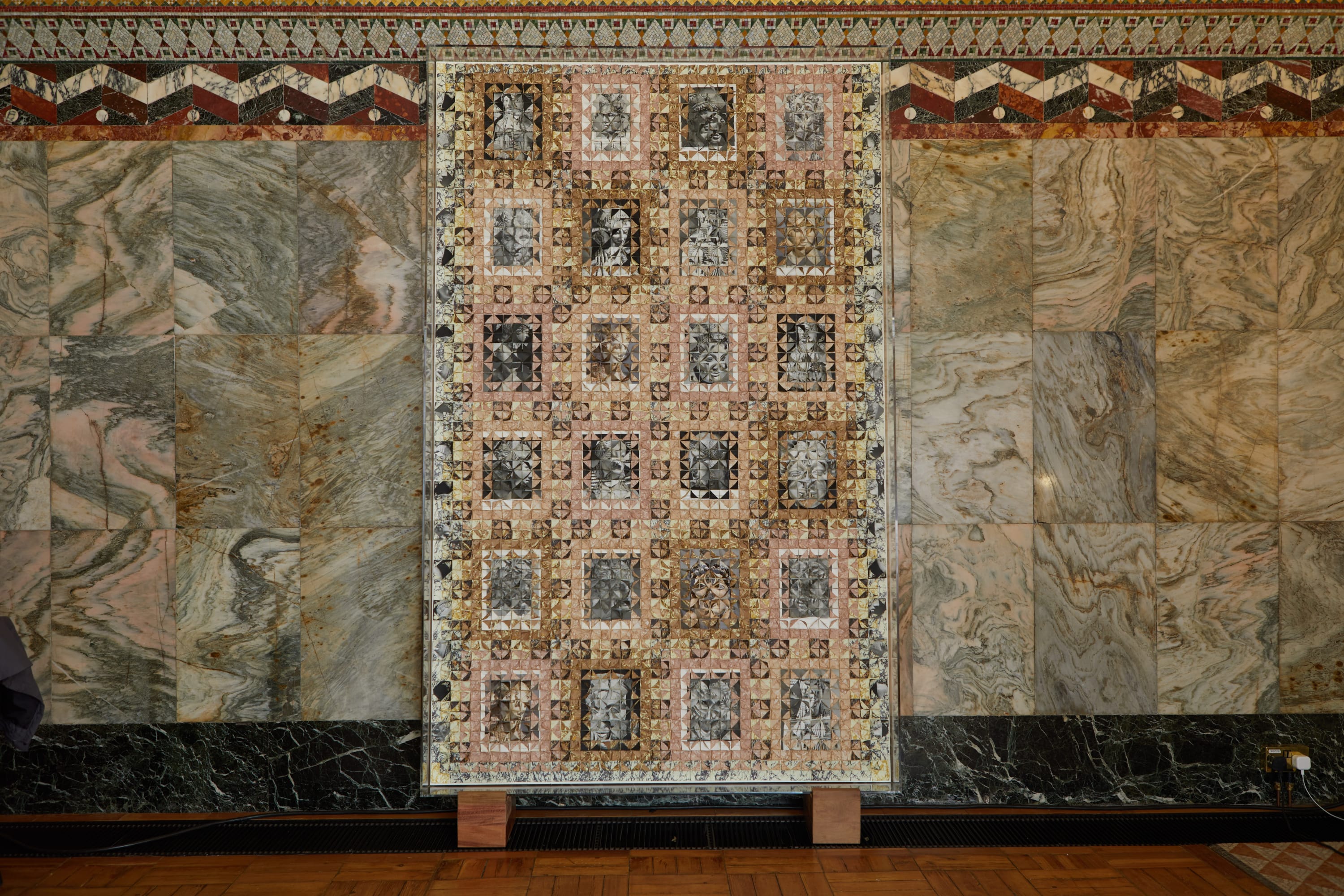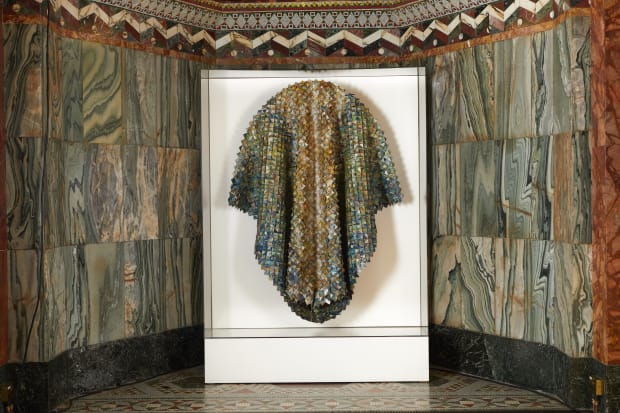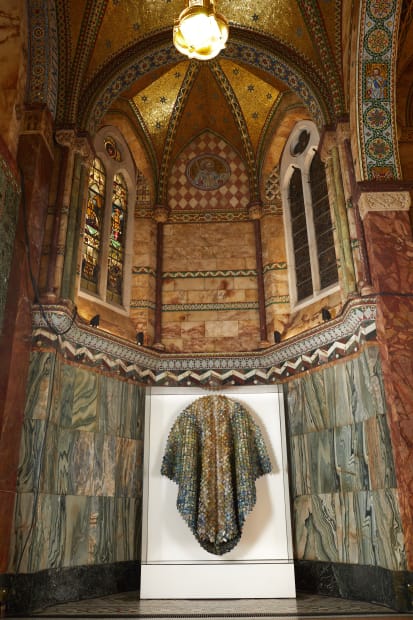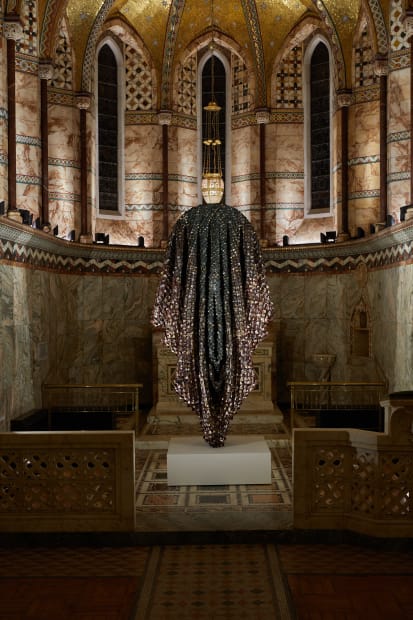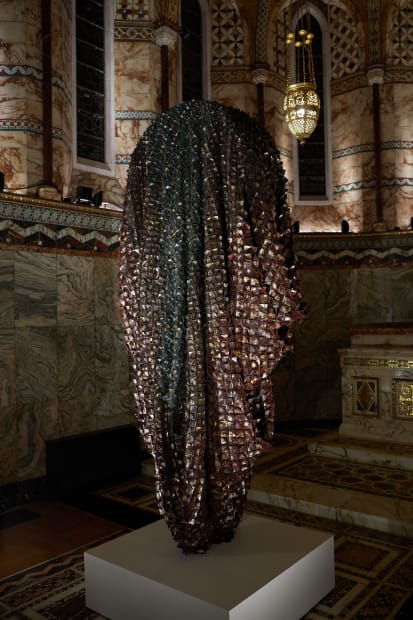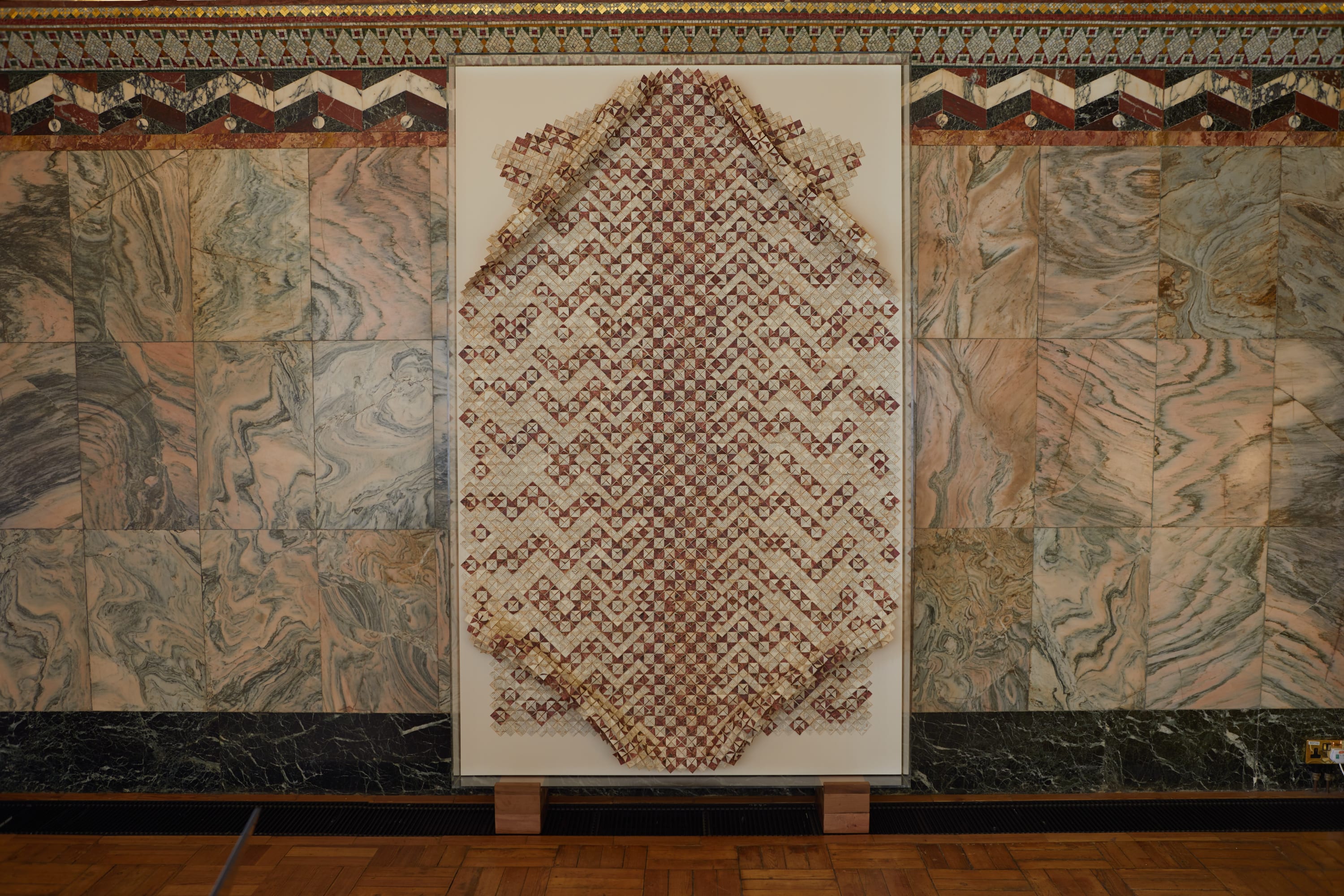The woven artworks of Catalina Swinburn seek to revalidate the place of women throughout history. In recognition of the way narratives were woven as a substitute for the silence of women across time, Swinburn uses this historical practice as a metaphor for resistance. “Weaving is a symbol of female expression, a substitution of a woman’s voice, weaving can portray what words cannot say.”
Swinburn’s show “Revolutionary Myths”, seeks to reimagine narratives of women by remembering primordial female figures which have shaped cultures and belief systems from ancient to contemporary times across the world. Swinburn has woven stories of legendary and historical women selected from foundational feminist literature into tapestries, presenting them as the fabric of a global heritage.
Taking place at Fitzrovia Chapel, Swinburn skillfully interweaves references between the chapel’s Byzantine architecture and its contemporary medieval work ‘The Book of the City of Ladies’ by Christine de Pizan, as she embellishes the chapel with woven investitures, which rise like the allegorical buildings of Pizan’s kingdom. The representation of these myths, through the interdisciplinary use of weaving, text and sound, instills a divine female presence into the worship space, historically void of feminine energy, in appreciation of the vital feminine contributions to human civilisation across political, spiritual and practical spheres.
-
Swinburn associates her artworks with what she calls “anticipated archaeology”: the presence and accumulation of fragments which provide new meaning to the whole that is signified in her works. The deconstructed portraits in ‘An Ode to The Amazons’ have been ripped from the spines of archaeological books, and appear as a collection of mutilated women in an image of cultural catastrophe, for the destruction of a book is comparable to the demolition of history. In recognition of the way narratives were woven as a substitute for the silence of women across time, Swinburn uses this historically significant practice as a metaphor for resistance. As she weaves these delicate and mutilated documents back together, they undergo an important transformation process into a vast and resilient tapestry.
The weaving together of 24 portraits, originally from ancient Greece, which are now displaced and exhibited in institutions across the world is symbolic. Joining this diaspora of emblematic women together, Swinburn creates an image of women coming together in collective resistance from across the world.
This artwork is ‘An Ode to The Amazons’, who, according to Greek mythology, were a tribe of female warriors who were masters in the foundation of ancient temples and civilisations, referenced in the artwork via the Chapel’s architectural design; seen in the arrangement of the portraits as well as the paper marbling which both resemble the mosaics of the Chapel’s sanctuary floor.
With no real evidence on this tribe, and most of the portraits in this work unknown women or ‘Kores’, this ‘Ode to The Amazons’ is an interpretation of a myth, a celebration of female collectives and their contribution to history.
-
Urania
-
Revolutionary Myths
-
The City of Ladies
The woven artworks of Catalina Swinburn seek to revalidate the place of women throughout history. In this piece, Swinburn weaves a historic edition of ‘The Book of the City of Ladies’ into a tapestry, presenting these foundational female figures as the fabric of a global heritage.
Swinburn skilfully interweaves references between the chapel’s Byzantine architecture and its contemporary medieval work written by Pizan in 1414, as she incorporates mosaic patterns from the chapel into the ruins of the book. Further parallels can be drawn between Pizan’s feminist writings and Swinburn’s artistic process, as the individual squares of paper Swinburn weaves together to create ‘City of Ladies’ resemble the bricks Pizan uses to construct her allegorical buildings.
Although ‘The Book of the City of Ladies’ was written more than half a millennium ago, it is filled with potent observations for our times, articulating its arguments much in the same way as today’s debate on the equality of women. With this text as the work’s medium, ‘City of Ladies’ is an appreciation of the vital feminine contributions to human civilisation across political, spiritual and practical spheres.
